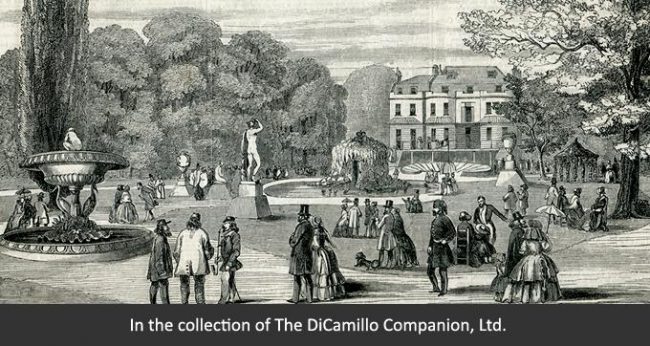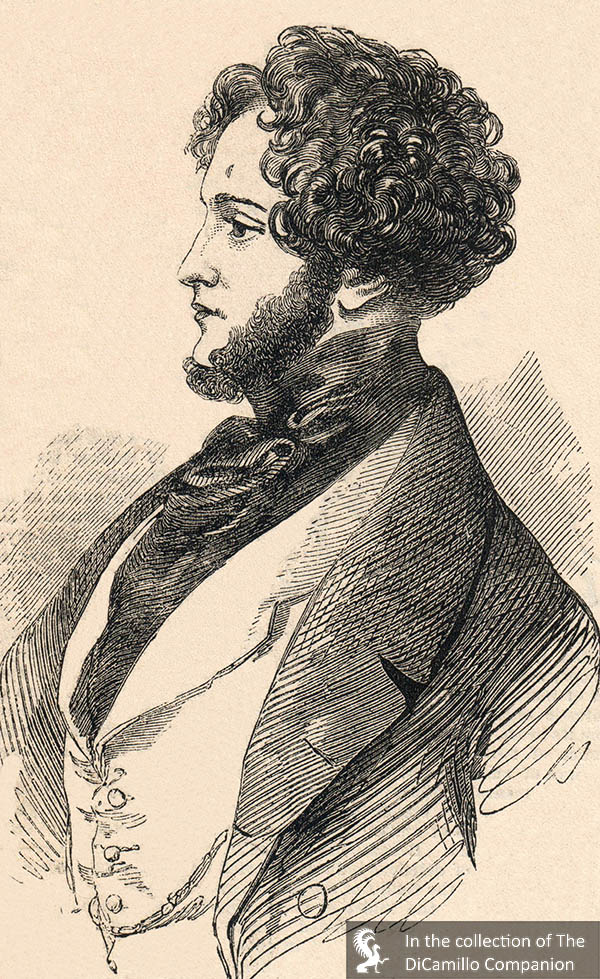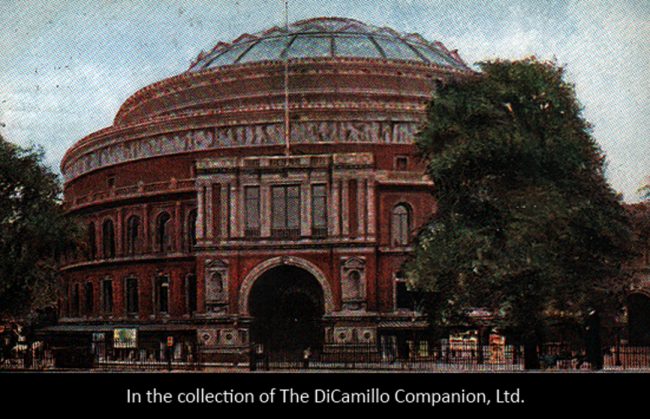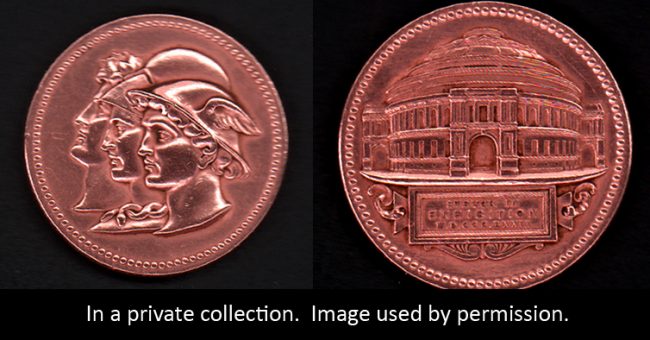
An engraving of the House from the May 10, 1851 issue of "The Illustrated London News" showing Sympoisum of All Nations in the gardens of Gore House.

The Count D'Orsay from the Aug 14, 1852 issue of "The Illustrated London News"

Royal Albert Hall from a 1905 postcard

An 1872 bronze medallion with the Royal Albert Hall on the reverse
House & Family History: Gore House was the most easterly of a row of mansions built in the 18th century between Palace Gate and Knightsbridge. In the early 19th century it was the home of the noted philanthropist and parliamentarian William Wilberforce, famous for his campaign to abolish the slavery in the British Empire. In 1829, after the death of her husband, Lord Blessington, Marguerite, Countess of Blessington, moved into Gore House with her friend (and possible lover) Alfred d'Orsay, Comte d'Orsay. The two made the House one of the hot spots of literary and artistic London society. Among other famous guests, Prince Louis Napoleon, later Napoleon III, was a frequent visitor (Count d'Orsay was a passionate Bonapartist). In 1849 the Count went bankrupt and he was forced to leave London and return to Paris. The Dowager Lady Blessington sold almost all her possessions and followed him there, but died a few weeks after her arrival. In May 1851 the House was opened as a restaurant by chef Alexis Soyer to cater to the huge numbers of visitors who were expected to attend the Great Exhibition of 1851. After the exhibition closed, Gore House and its land were purchased by the Royal Commissioners and the House was pulled down; today the Royal Albert Hall stands on the site of Gore House. The doors in the Great Hall at Buxted Place, Surrey, came from Gore House. The term "Kensington Gore" is theatre slang for stage blood.
Collections: There was a sale of the contents of Gore House in 1849.
Title: Buildings of England: Sussex, The
Author: Pevsner, Nikolaus; Nairn, Ian
Year Published: 1973
Reference: pg. 466
Publisher: London: Penguin Books
ISBN: 0140710280
Book Type: Hardback
House Listed: Demolished
Park Listed: Destroyed
Past Seat / Home of: William Wilberforce, 1808-21. Marguerite, Countess of Blessington, and Count D'Orsay, 1836-49.
Current Ownership Type: Demolished
Primary Current Ownership Use: Demolished
House Open to Public: No
Historic Houses Member: No